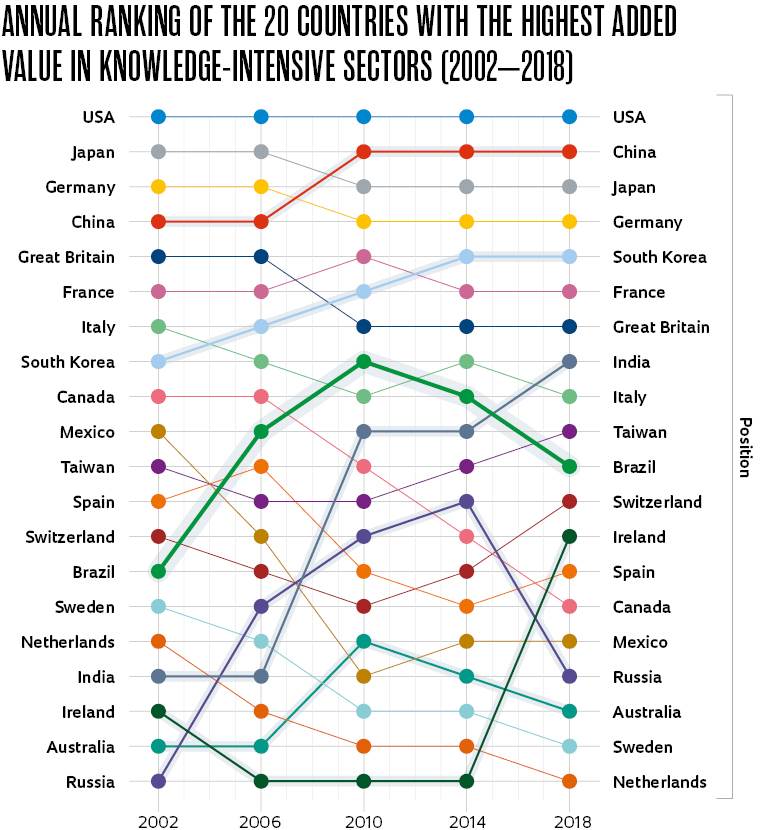
- Of the various data used to calculate a country’s Gross Domestic Product (GDP), the output of different economical sectors is of particular importance. With this information, it is possible to observe and monitor the added value of knowledge-intensive sectors, i.e., those classified by OECD criteria as having high and medium-high research and development (R&D) intensity (see note)
- Greater involvement of these industries in a country’s productive structure is reflected in its economic output and increases its capacity to generate goods and services with greater added value. These sectors are geographically concentrated: in 2018, almost 90% of their worldwide added value was generated in just 20 countries
- The graph to the right shows the major trends in this area between 2002 and 2018. China, South Korea, India, and more recently Ireland have climbed several positions to the detriment of other European countries, Canada, and Mexico. China took second place in 2009 and is gaining ground on the USA: in 2018, the difference between them was smaller than 5%. In 2002, it exceeded 80%

- In 2002, Brazil ranked 14th in this list. Over the following years, it climbed up the table, reaching 8th in 2010, but it could not sustain its position. Other countries, such as Russia and Australia, have followed similar trajectories, although all three held higher positions in 2018 than in 2002
- The graph to the left shows that until 2011, Brazil’s performance in knowledge-intensive sectors surpassed that of the global total. It then lost momentum and declined, before stabilizing in 2015 at a level slightly higher than in 2002. In 2018, the country accounted for 1.3% of global added value in knowledge-intensive sectors—11th in the world. This demonstrates that Brazil’s productive structure was able to maintain its high-complexity sectors in 2018, despite the economic and industrial difficulties faced by the country, although its recent trajectory highlights the need for improvement
Note Knowledge-intensive sectors correspond to the high and medium-high intensity R&D sectors proposed by the Organization for Economic Cooperation and Development (OECD). High intensity R&D sectors include: aerospace, pharmaceuticals, computer, optical and electronic manufacturing, R&D services, and software publishing. Medium-high intensity R&D sectors include: weapons and ammunition manufacturing, automotive vehicles, medical and dental instruments, machinery and equipment, chemicals and chemical products, electrical equipment, railway and military vehicles, and IT and telecommunication services.
SOURCE National Science Foundation. Science and Engineering Indicators. 2020 (basic data)
Republish